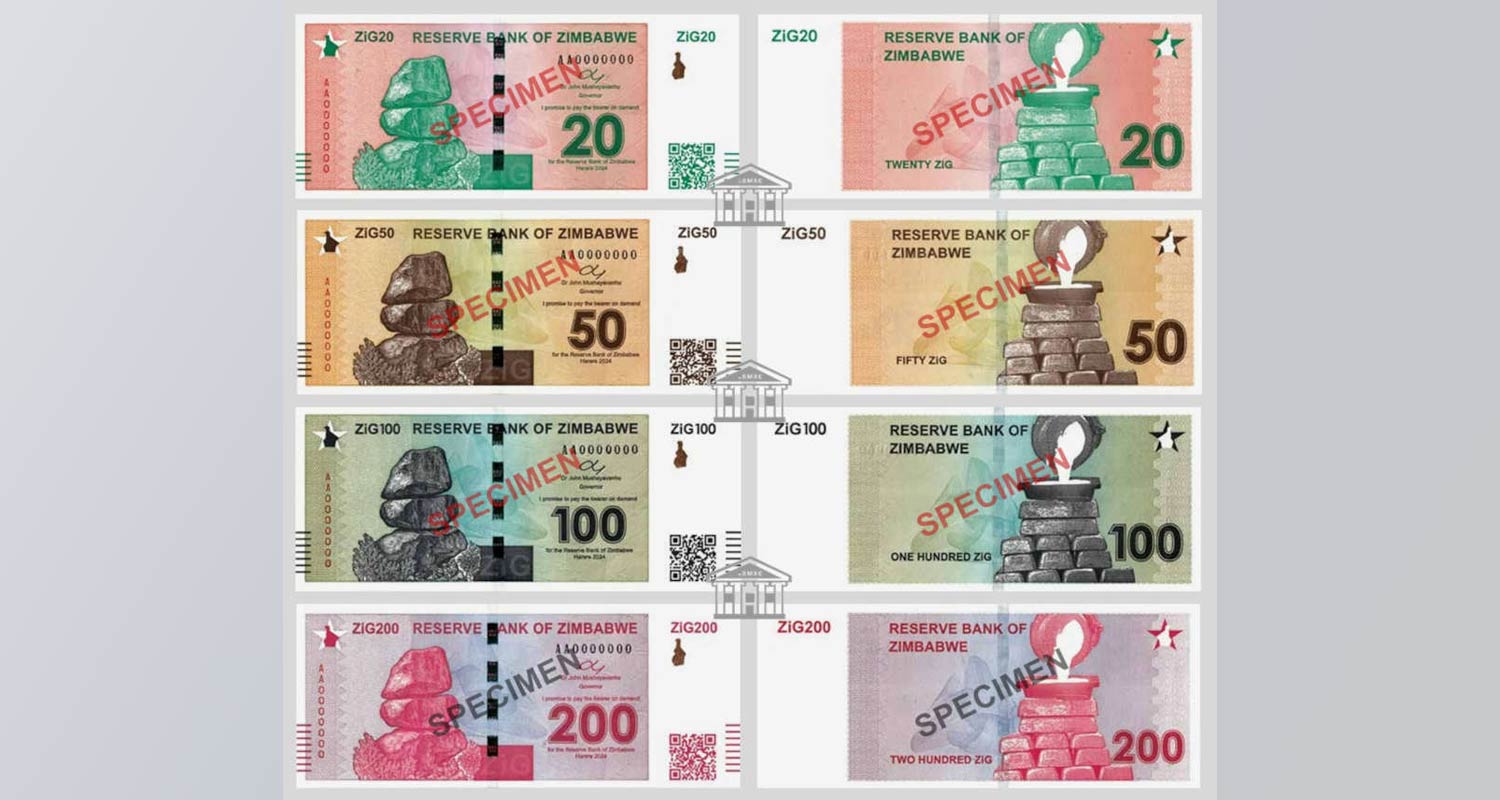 The QR codes are clearly visible on the front of the new ZiG banknotes (left)
The QR codes are clearly visible on the front of the new ZiG banknotes (left)Zimbabwe recently introduced a new currency, the ZiG, backed by physical gold and US dollar reserves. The government hopes the ZiG will finally provide a stable rate of exchange after years of hyperinflation and end the dollarisation of the economy.
But there’s something curious about the new banknotes: each has a QR code – or Quick Response code – of the kind smartphone users are used to scanning to get a link to a website or to log into an application like WhatsApp on their computers.
In essence, a QR code is a type of bar code used to store information like a website address – or anything, really.
The ZiG banknotes come in denominations of up to ZiG200, are made of cotton paper and have the Zimbabwe Bird as their watermark. They entered circulation on 8 April.
According to the website FactCheckZW, the ZiG banknotes’ QR codes are designed to be read by an imaging device. Quoting the Zimbabwe Coalition on Debt and Development, it said the codes “likely indicate that authorities will soon adopt advanced technologies like blockchain and distributed ledger technologies”. Zimbabwe’s central bank has expressed an interest in launching a blockchain-based central bank digital currency.
“These technologies guarantee transparency and efficiency of transactions and are even difficult to disrupt. This ensures that all transactions are safely recorded, as no documents can be falsified since all data is immutable – anyone cannot modify it,” according to FactCheckZW.
“This will circumvent the dangers of reliance on centralised, traditional database systems, which are highly prone to manipulation, may be hacked, and are susceptible to genuine human errors.”
Counterfeits
According to some reports, the QR codes are also a means of preventing counterfeits. They can be used to trace money if it’s stolen, too, or track funds used to pay ransoms to criminals, making it easier to catch the perpetrators.
When TechCentral scanned one of the new notes (a ZiG10 note) with a smartphone, three lines of plain text was returned: “Reserve Bank of Zimbabwe; ZiG10; Harare 2024.”
According to the Harare Live news website, the QR codes can also be used to access information about the currency, such as the exchange rate, its history and its features, which the website described as “useful for tourists and foreigners who are not familiar with the currency”.
“Moreover, the QR code can also promote financial literacy and education. The Reserve Bank of Zimbabwe can use the QR code to provide resources and materials on financial management, savings and investments. This can help improve the financial literacy of Zimbabweans and empower them to make informed decisions.
“The QR code can also benefit businesses and merchants. They can use the QR code to accept payments from customers who have ZiG banknotes. By scanning the QR code, the payment can be processed quickly and securely, without the need for cash or card transactions. This can reduce the risk of theft and fraud and make transactions more efficient.”
Writing on LinkedIn, Vimbainashe Kaseke, a computer engineer and software developer, explained that the benefits of QR code banknotes include enhanced security (they make counterfeiting more difficult), integration with digital wallets, theft mitigation, programmable money applications, easy conversion to digital funds, and perhaps later, integration with the blockchain and central bank digital currencies, and even cryptocurrencies.
Zimbabwe is by no means the first country to introduce QR codes on its banknotes – though the concept is still relatively new around the world. The Netherlands was the first country to do so, introducing euro notes in 2007 with integrated QR codes. It followed that with QR codes on some coins in 2011. The first bar codes (not the more advanced QR codes) appeared on banknotes as far back at the late 1980s.
While QR codes are not widely used in banknotes, they have become used more widely, including in Africa, where Ghana was the first to adopt them.
TechCentral asked the Reserve Bank via e-mail whether it has any plans to print QR codes on South Africa’s banknotes, but the Bank hadn’t responded by the time of publication. – © 2024 NewsCentral Media



 2 weeks ago
68
2 weeks ago
68

















